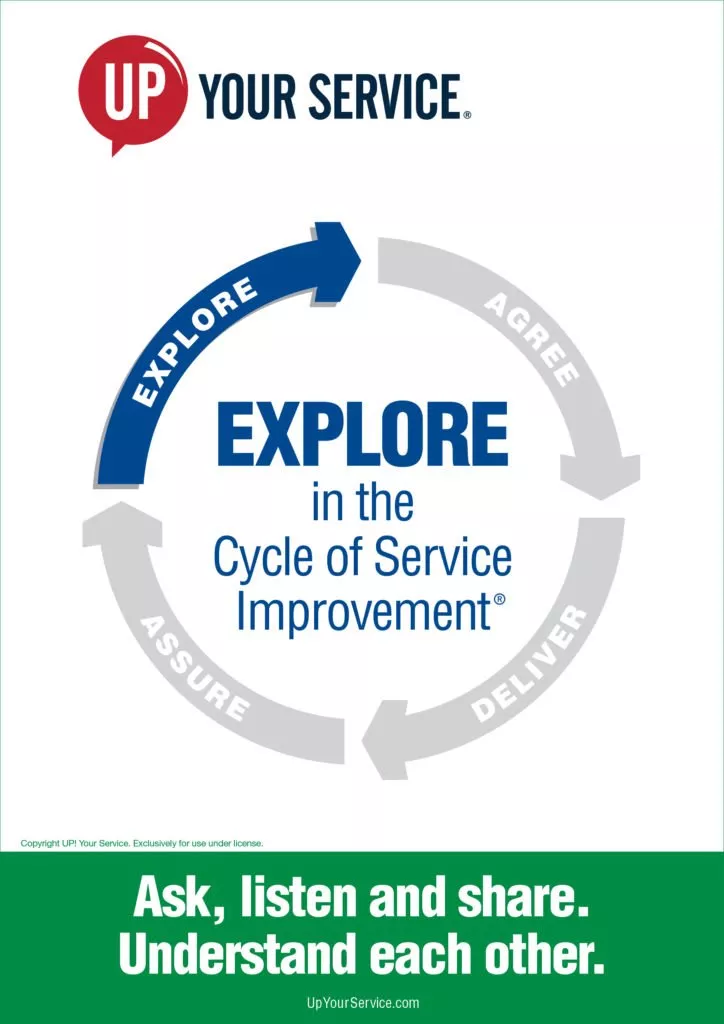
In a previous blog, I wrote about the critical action steps for managers before and after their team members experience service education. Managers also play a pivotal role in enabling a service culture change.
When staff members struggle to adopt a new way of thinking, system, or tool, the problem is usually not the approach, system or tool itself. Often, it is the underlying need for cultural change that creates reluctance. I once managed the implementation of a new CRM system in a large organization. The software and tools worked fine. It was the change required in peoples’ process, relationships, and habits that challenged the success of this project.
In a service culture change, new tools are introduced, processes are improved, and innovative ideas are born. The manager often determines which ideas and actions will succeed or fail. He or she must engage the team to explore resistance, generate acceptance, and inspire participation.
The Cycle of Service Improvement is a powerful model to guide manager’s conversations with colleagues. Here is a summary of the four key steps in this model:
1. Explore: Ask questions. Listen. Uncover negatives. Discover positives. Build involvement.
2. Agree: Offer alternatives. Be flexible. Confirm next steps.
3. Deliver: Do what you promise. Provide ongoing updates.
4. Assure: Follow through. Check for satisfaction. Show appreciation. Explore anew.
There are three primary phases to a cultural change: the introduction or orientation to a change, the disorientation produced by the change, and re-orientation, or integration, as the change becomes the new normal. Managers can use these questions to “explore for more” with team members in each phase of change.
- What are your concerns?
- What are you excited about?
- How could this new approach to service be even better for you?
- What are the greatest challenges you face?
- What feels out of control?
- What is confusing or creating frustration?
- What new requests or relationships could you create to gain solutions and support?
- What are the barriers in your way?
- What remains difficult for you every day?
- Do you feel connected to this change, or do you feel behind?
- What systems no longer support you?
- What is impacting your work life?
- What service have you improved?
- What successes and wins can you share?
When managers “Explore” issues like this with team members, the conversations build commitment and greater trust. In upcoming blog posts we will look into the next three stages: Agree, Deliver, and Assure.



